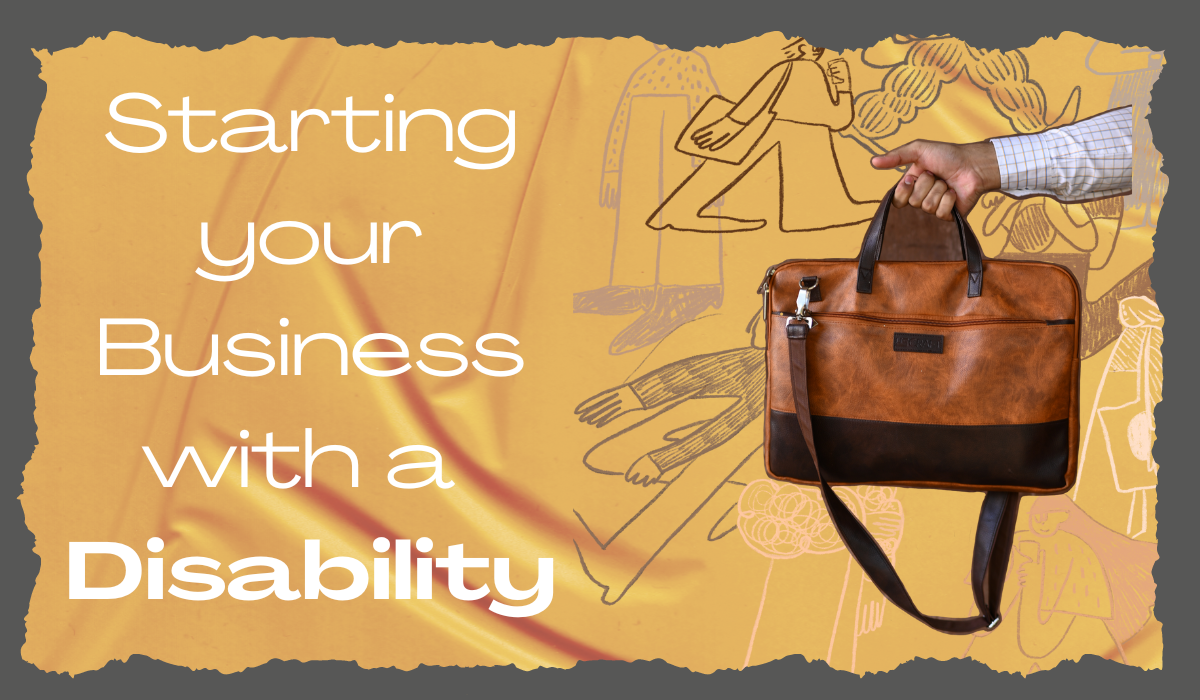For many people with disabilities, a stable job can feel out of reach. But that doesn’t need to be the case. People with disabilities prosper in a wide variety of working fields. While it can be a greater challenge, it is far from impossible to work in an industry you love, or even start your own business.
In fact, starting a 1-person small business (a “microenterprise”) is easier than you think. All you need is need time, ambition, ingenuity, and dedication. In this article, we’ll discuss the basic steps you need to take to start a microenterprise in Australia.
1. Disability Accommodations
Starting a microenterprise can take a fair bit of effort, so it’s important to consider how to accommodate your disability with it. The accommodations you make will depend on your disability, but it’s important to keep these principles in mind:
- Do not start a business that will harm your physical state.
- Be sure you will have the leeway to meet deadlines on time.
- You don’t need to do what other people are doing.
- Think small-scale to start, you can get bigger with success.
- Ask for help whenever you need it.
2. Australian Business Number
An Australian Business Number (or ABN) is a necessary step to owning a small business in Australia. You can easily apply for an ABN online for free.
To have an ABN, you need to be working as a business or taking steps to start a business. So while it’s the last thing you’ll do, it’s one the most important things.
Accommodations: Getting an ABN is a straight forward process, but it can feel scary. You may want a guardian or support partner’s help getting it to make sure you fill in the correct details and understand everything.
3. Products & Services
All businesses sell something, so what will you sell? A microenterprise is a very small business, so it needs to be a product you can make a lot of on your own, a service you can provide consistently. Look at your skills for this, and make sure it’s within your capacity.
For example: If you’re an artist, you can sell pieces of your art. If you’re knowledgable in a specific field, you can work as a tutor. Whatever it is, it needs to be something you can commit to doing repeatedly and consistently, on a schedule even. For more ideas on what you can do as a microenterprise, read our other article with X ideas. (Link)
Accommodations: Keep your product and service within your interests. Being passionate about it is something that will keep you going. Make sure that whatever you are working on, you can comfortably continue to work on it into the future without hurting yourself or burning out.
4. Point of Sale
Now you know what you’re going to sell, you need to find a way to sell it. The Point Of Sale (POS) is where people go to buy your products and hire your services.
If you’re selling products, you don’t need a big store. Small businesses start small, so you can set up an online store like Etsy or Facebook Marketplace, or sell your products at craft fairs.
If you’re selling a service, you need to advertise yourself. You can spread information about your services through word of mouth, on social media posts, and even on posters in public places.
Accommodations: Unfortunately, not everywhere may be accessible for you as a point of sale. Try to use the internet where possible to advertise, it’s free and easy to set up a page on most social media websites, and you can set your sales to be within your social comfort limits.
5. Cost and Pricing
It can be hard to know the value of what you’re selling. It’s important that when you’re selling, you are making a profit. That means the cost to make or do what you are selling should be less than the amount you are making by selling it. Remember to consider these when measuring your cost:
- Price of materials used to make a product.
- Time spent to make a product or perform a service.
- Money spent on resources such as fuel to perform a service.
Make sure that the price of anything you sell is enough to cover having made it, but keep your prices fair. If you’re unfamiliar with prices and money handling, Arch Association can help you learn those essential working skills through our SLES program.
Accommodations: Ask other people about their opinions on your prices and talk to them about how you decided on that number.
6. Branding & Advertising
Every business needs a name, and a logo will help too. If you have the skills, or know someone who does, then it’s a great idea to get these set up because they’ll make it easier to be recognised in the future and to find points of sale.
Branding can be used to advertise and get your product or service known such as on a facebook page.
Accommodations: Don’t overdo it. Just having a recognisable name and logo is enough to get you started, and once you’ve found some success in selling your goods and services, you can splash out into things like flyers and business cards.
Keep these steps in mind, and you’ll be on the right path to need to setting up your own microenterprise.
We can’t wait to see what you make.


Comments